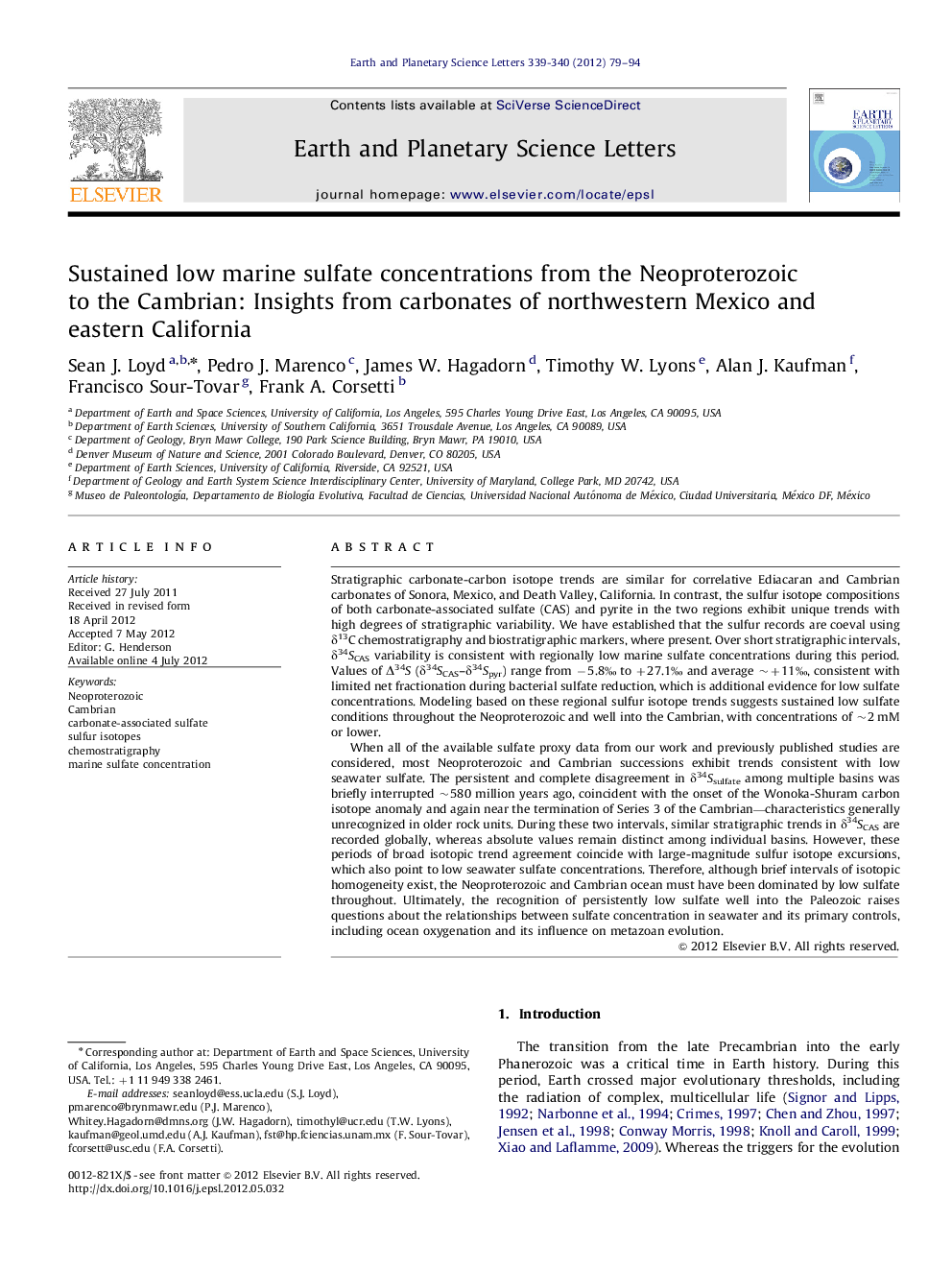| کد مقاله | کد نشریه | سال انتشار | مقاله انگلیسی | نسخه تمام متن |
|---|---|---|---|---|
| 4677426 | 1634801 | 2012 | 16 صفحه PDF | دانلود رایگان |

Stratigraphic carbonate-carbon isotope trends are similar for correlative Ediacaran and Cambrian carbonates of Sonora, Mexico, and Death Valley, California. In contrast, the sulfur isotope compositions of both carbonate-associated sulfate (CAS) and pyrite in the two regions exhibit unique trends with high degrees of stratigraphic variability. We have established that the sulfur records are coeval using δ13C chemostratigraphy and biostratigraphic markers, where present. Over short stratigraphic intervals, δ34SCAS variability is consistent with regionally low marine sulfate concentrations during this period. Values of Δ34S (δ34SCAS–δ34Spyr) range from −5.8‰ to +27.1‰ and average ∼+11‰, consistent with limited net fractionation during bacterial sulfate reduction, which is additional evidence for low sulfate concentrations. Modeling based on these regional sulfur isotope trends suggests sustained low sulfate conditions throughout the Neoproterozoic and well into the Cambrian, with concentrations of ∼2 mM or lower.When all of the available sulfate proxy data from our work and previously published studies are considered, most Neoproterozoic and Cambrian successions exhibit trends consistent with low seawater sulfate. The persistent and complete disagreement in δ34Ssulfate among multiple basins was briefly interrupted ∼580 million years ago, coincident with the onset of the Wonoka-Shuram carbon isotope anomaly and again near the termination of Series 3 of the Cambrian—characteristics generally unrecognized in older rock units. During these two intervals, similar stratigraphic trends in δ34SCAS are recorded globally, whereas absolute values remain distinct among individual basins. However, these periods of broad isotopic trend agreement coincide with large-magnitude sulfur isotope excursions, which also point to low seawater sulfate concentrations. Therefore, although brief intervals of isotopic homogeneity exist, the Neoproterozoic and Cambrian ocean must have been dominated by low sulfate throughout. Ultimately, the recognition of persistently low sulfate well into the Paleozoic raises questions about the relationships between sulfate concentration in seawater and its primary controls, including ocean oxygenation and its influence on metazoan evolution.
► NW Mexico and SW USA Neoproterozoic-Cambrian units correlated via δ13C.
► High δ34SCAS variability suggests sustained low sulfate oceans, well into Cambrian.
► Growing evidence for δ34S heterogeneous oceans supports low sulfate conditions.
► Indicates decoupling among oceanic sulfate, oxygen and metazoan radiation.
Journal: Earth and Planetary Science Letters - Volumes 339–340, 15 July 2012, Pages 79–94